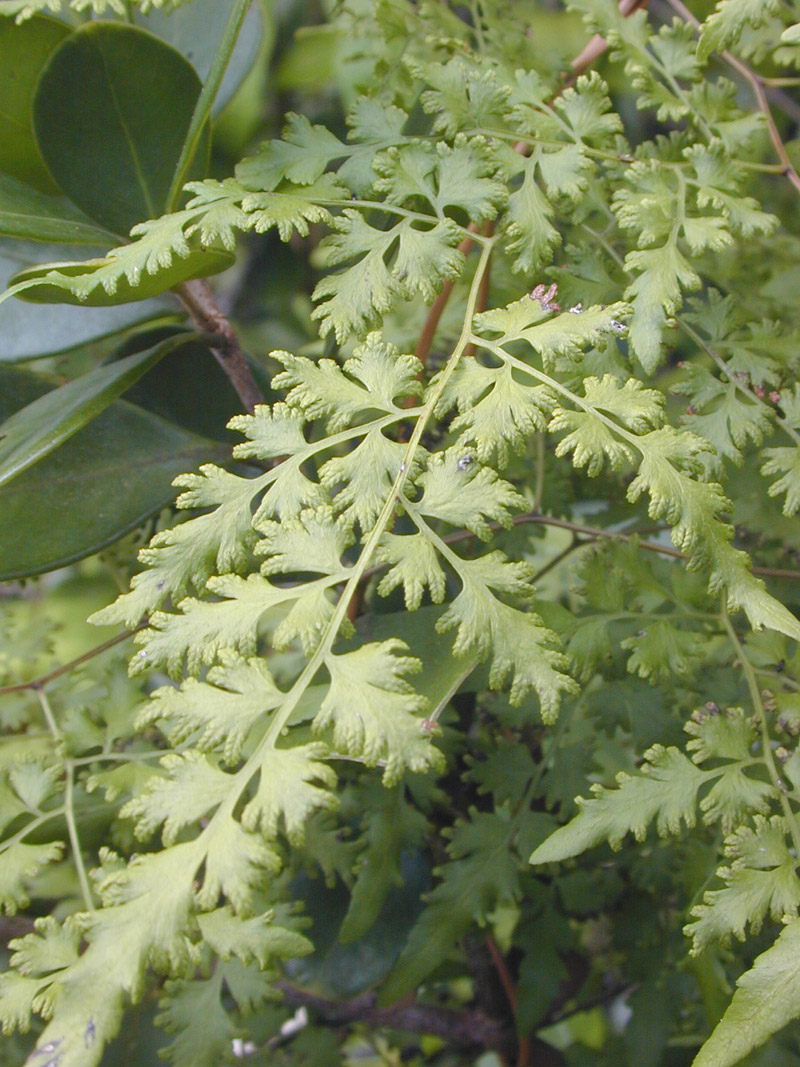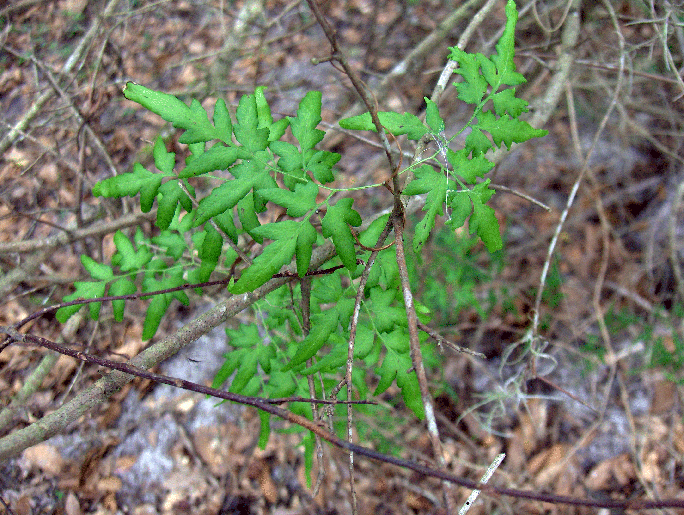Exploring Willow-leaved climbing fern
Scientifically recognized as Lygodium japonicum and classified under Lygodiaceae, stands out as a distinctive Fern known for its unique characteristics. While it may also be found under other Synonyms, Lygodium japonicum var. chinense, Lygodium japonicum var. japonicum.withNone specified form. You can use our free plant care app PlantPlants to identify Willow-leaved climbing fern.
Temperature
20 F (-6 C) to 100 F (38 C)
Watering
Keep soil consistently moist
Fertilizing
Balanced, slow-release fertilizer
Sunlight
Prefers partial to full shade
Toxicity
Non-toxic


Appearance and Growth Of Willow-leaved climbing fern
At maturity, this species reaches approximately Up to 4 meters in length (can climb), presenting Pinnate leaves, with long fronds that are finely divided and resemble willow leaves along with Not applicable (ferns do not have flowers), followed by Produces spores located along the edges of the fronds. These features are supported by a reliable Rhizomatous, providing support and anchorage, ensuring stability and sustained growth.
Willow-leaved climbing fern Origin and Habitat
Native to Native to East Asia, particularly Japan, Korea, and China; also found in the southeastern United States, Willow-leaved climbing fern thrives in Thrives in moist, shaded areas, often found in forests and along stream banks at elevations around Lowland to moderate elevations. Best suited for USDA Hardiness Zone Zones 7-10. Whether grown indoor, in a curated garden or a more natural setting, its ecological requirements help maintain its vigor over time.



How to take Care of Willow-leaved climbing fern
Light, Soil and Watering Willow-leaved climbing fern.
You can use our free plant identify app PlantPlants to chose the best spot for Willow-leaved climbing fern, This plant prefers Prefers partial to full shade and flourishes in Rich, loamy soil with good drainage with a soil pH of about 5.5-7.0.
Willow-leaved climbing fern needs watering,Keep soil consistently moist, guided by PlantPlants app, You can get plants daily watering schedule. to maintain High moisture preference, ensure steady hydration. Applying water through Water at the soil level to avoid leaf rot supports even distribution and helps prevent overwatering or dryness.
Temperature and Humidity
Willow-leaved climbing fern performs best within Adaptable but prefers 60 F 85 F (15 C 30 C). Its ideal growth occurs at around 75 F (24 C), though it tolerates ranges from 20 F (-6 C) to 100 F (38 C). Additionally, maintaining High humidity preferred encourages healthy foliage and overall plant vigor.
Fertilization & Soil Health
Feeding with Balanced, slow-release fertilizer at the recommended Seasonal Application Frequency on PlantPlants App keeps nutrients balanced. Incorporating Compost or leaf mold enhances soil structure and fertility, while staying alert to Yellowing leaves, stunted growth helps you adjust care as needed to maintain optimal plant health.
Routine and Maintenance
Regular attention ensures this plant’s beauty and longevity. Early spring before new growth starts for Remove dead or damaged fronds tidies its appearance, while Every 2-3 years, depending on growth may be necessary as it grows, requiring a Increase pot size by 1-2 inches increase and a fresh Equal parts peat, loam, and perlite. for Staking or Support. Requires support if climbing.
Seasonal Changes and Propagation of Willow-leaved climbing fern
During Early winter (growth slows significantly), growth may slow and some Evergreen; no significant leaf drop can occur. For those looking to propagate, consider Spores, division of rhizomes and provide Maintain high humidity and warm temperatures when starting from seed. If using cuttings, follow Not commonly propagated by cuttings, generally uses spores or division to ensure successful rooting and healthy new plants.
Pests, Diseases and Prevention
our free plant identify and care app PlantPlants can help you diagnosisWillow-leaved climbing fern problems.Though generally robust, keep watch for Aphids, spider mites and remain vigilant against Leaf spot, root rot. Implementing Regular monitoring and maintaining good air circulation and applying Insecticidal soap for pests; improve drainage and avoid overwatering for diseases when issues arise will help sustain the plant thriving.
Companions and Uses of Willow-leaved climbing fern
This plant pairs nicely with Hostas, ferns, shade-loving ground covers and shows None reported, making it a flexible choice for various Ground cover, erosion control, ornamental features in shaded areas.
Edible and Cultural Aspects
the Edible Parts: Young fronds (fiddleheads) (note: should be cooked). Toxicty of Willow-leaved climbing fern, Non-toxic. learning about its Spring, before fronds unfurl, Used in stir-fries and salads in some cultures, and Source of fiber and some vitamins can be intriguing for culinary explorers. Some traditions highlight its Used in traditional medicine for various ailments or note its Valued in Asian cultures for its ornamental beauty.
Conservation and Status
With an Not currently evaluated, proper Protect natural habitats, monitor populations to prevent overharvesting
Frequently Asked Questions
1. How often should I water my willow-leaved climbing fern?
Water every 3 days in summer and every 14 days in winter.
2. Does this fern require direct sunlight?
No, it prefers partial to full shade.
3. What type of soil is best for this fern?
Rich, loamy soil that is well-drained and retains moisture.
4. Can I propagate this fern from cuttings?
Not typically; it’s best propagated from spores or rhizome division.
5. Is the willow-leaved climbing fern toxic?
No, it is non-toxic to animals and humans.
6. What does the fern look like in winter?
It enters a dormancy period but remains evergreen, not typically shedding leaves.
7. Should I fertilize during winter?
Fertilization is not necessary during winter; it’s best to do it every 90 days.
8. What are the signs of nutrient deficiency in this fern?
Yellowing leaves and stunted growth can indicate nutrient deficiencies.
9. Does this plant need any support to climb?
Yes, if you want it to climb, provide support such as a trellis.
10. Are fiddleheads from this fern edible?
Yes, young fronds (fiddleheads) can be eaten after being cooked.



